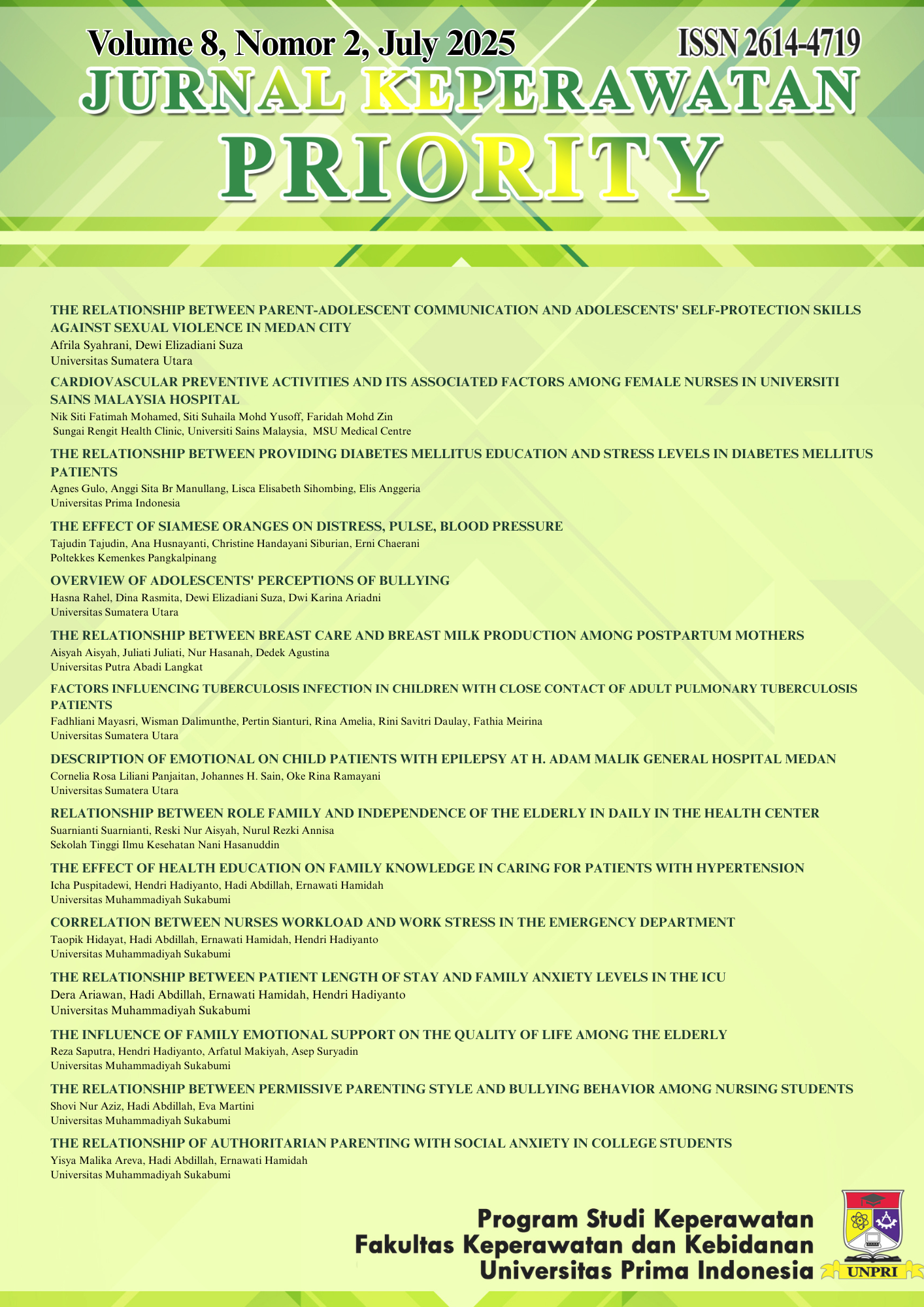The Relationship Between Parent-Adolescent Communication and Adolescents' Self-Protection Skills Against Sexual Violence in Medan City
DOI:
https://doi.org/10.34012/jukep.v8i2.6772Keywords:
adolescent, communication, parents, sexual violenceAbstract
Sexual violence is a forced sexual act without consent and has consequences for health problems, namely reproductive health, physical health, and mental health, which can be felt in the short and long term. It has become a global issue that requires immediate attention. This study aims to analyze the relationship between parent-adolescent communication and adolescents' ability to protect themselves against sexual violence in Medan City. The research employs a quantitative approach using a descriptive correlation method, involving 52 respondents-students in grades X and XI at MAS Al-Jamiyatul Washliyah school in Medan City-selected through purposive sampling. The Chi-Square test was utilized for data analysis. Research data collection was carried out by distributing questionnaires using the google form application in May 2024, and computerized data processing using SPSS with univariate and bivariate data analysis. The findings revealed that 73.1% of respondents exhibited good parent-adolescent communication, 98.1% demonstrated effective self-protection skills, and 94.2% were considered at low risk of sexual violence. The results of the Chi-Square test indicated a significant relationship between parent-adolescent communication and the incidence of sexual violence, with a p-value of 0.003 (α = 0.05). However, there was no significant relationship found between adolescents' self-protection skills and the risk of sexual violence, as indicated by a p-value of 0.803 (α = 0.05). In conclusion, both parent-adolescent communication and self-protection skills are essential preventive measures against sexual violence. It is expected that schools can provide education related to the importance of parent-adolescent communication to prevent sexual violence.
Downloads
Published
How to Cite
Issue
Section
License
Copyright (c) 2025 Afrila Syahrani, Dewi Elizadiani Suza

This work is licensed under a Creative Commons Attribution 4.0 International License.
Authors who publish their manuscripts through the Journal of Keperawatan Priority agree to the following:
- Copyright to the manuscripts of scientific papers in this Journal is held by the author.
- The author surrenders the rights when first publishing the manuscript of his scientific work and simultaneously the author grants permission / license by referring to the Creative Commons Attribution 4.0 International License to other parties to distribute his scientific work while still giving credit to the author and the Journal of Journal Keperawatan Priority as the first publication medium for the work.
- Matters relating to the non-exclusivity of the distribution of the Journal that publishes the author's scientific work can be agreed separately (for example: requests to place the work in the library of an institution or publish it as a book) with the author as one of the parties to the agreement and with credit to sJournal ofJournal Keperawatan Priority as the first publication medium for the work in question.
- Authors can and are expected to publish their work online (e.g. in a Repository or on their Organization's/Institution's website) before and during the manuscript submission process, as such efforts can increase citation exchange earlier and with a wider scope.


















